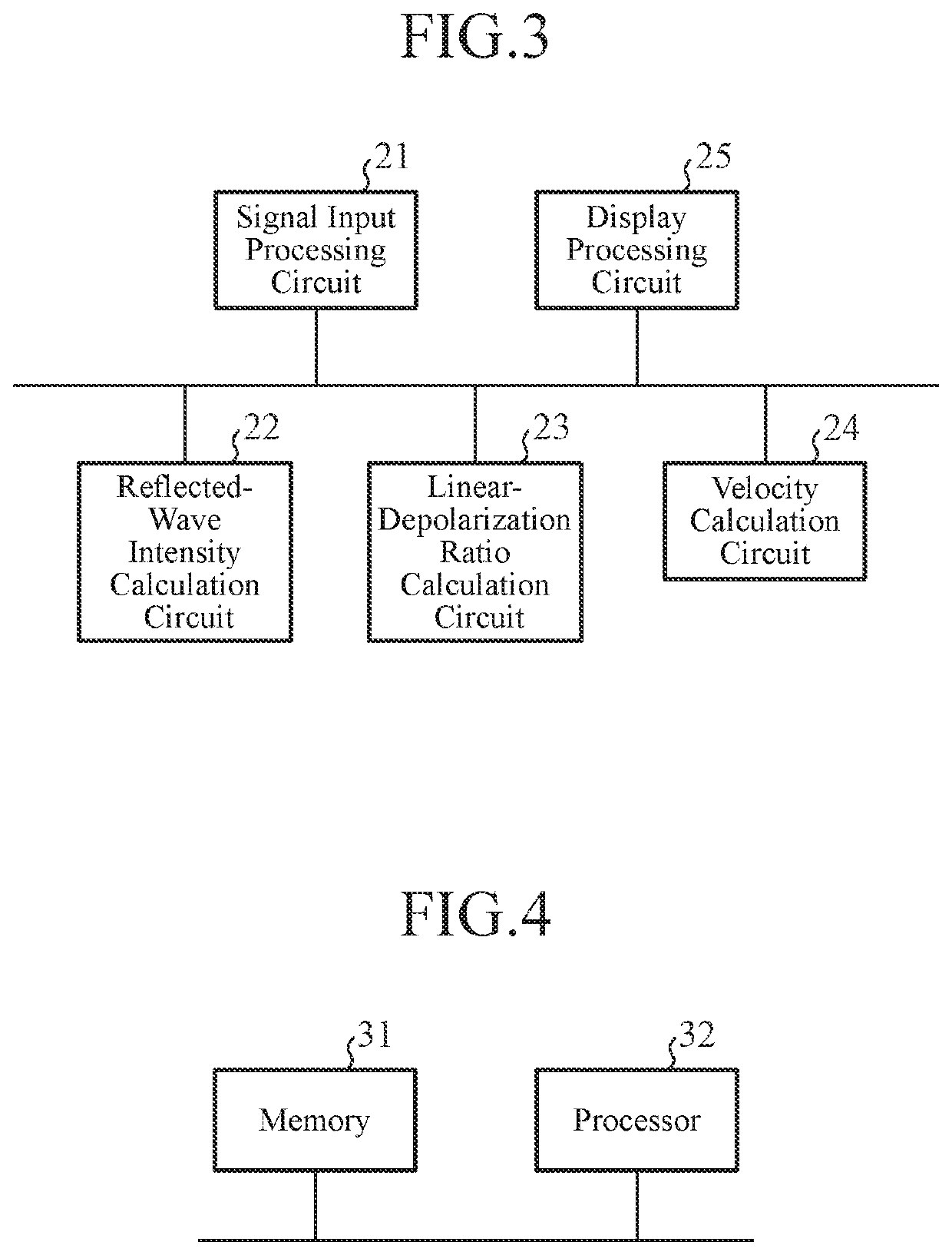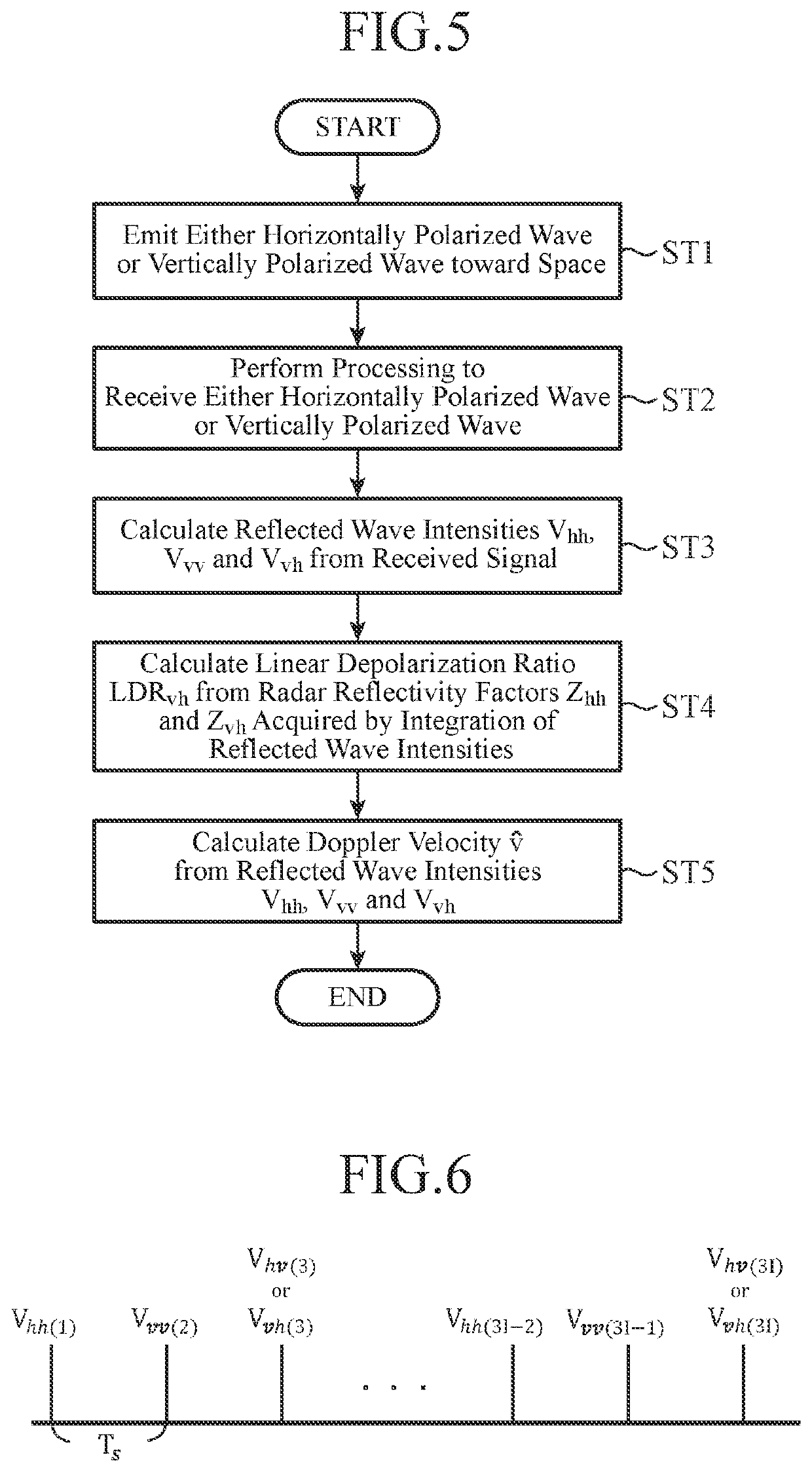Dual polarization radar apparatus and radar signal processing method
a radar and signal processing technology, applied in the direction of climate sustainability, instruments, measurement devices, etc., can solve the problem of difficult for the weather radar with a single polarized wave to accurately estimate the intensity of rainfall, and achieve the effect of preventing the nyquist rate from decreasing
- Summary
- Abstract
- Description
- Claims
- Application Information
AI Technical Summary
Benefits of technology
Problems solved by technology
Method used
Image
Examples
embodiment 1
[0029]FIG. 1 is a block diagram showing a dual polarization radar apparatus according to Embodiment 1 of the present invention.
[0030]Further, FIG. 2 is a block diagram showing a signal processing device 6 of the dual polarization radar apparatus according to Embodiment 1 of the present invention, and FIG. 3 is a hardware block diagram of the signal processing device 6 shown in FIG. 2.
[0031]In the configurations shown in FIGS. 1 to 3, the transmission / reception device 1 is comprised of a transmitter 2, a transmission-reception switch 3, an antenna 4 and a receiver 5, and repeatedly performs three types of polarized-wave transmission / reception processing elements which are shown below:
[0032](1) “Transmission of a horizontally polarized wave and reception of a horizontally polarized wave” which is first transmission / reception processing to transmit a horizontally polarized wave and receive a horizontally polarized wave;
[0033](2) “Transmission of a vertically polarized wave and receptio...
embodiment 2
[0168]Although in above-mentioned Embodiment 1, the example in which the transmission / reception device 1 performs either “the transmission of a horizontally polarized wave and the reception of a vertically polarized wave” which is the third transmission / reception processing or “the transmission of a vertically polarized wave and the reception of a horizontally polarized wave” which is the fourth transmission / reception processing is shown, the transmission / reception device 1 can repeatedly perform the four types of polarized-wave transmission / reception processing elements by performing both “the transmission of a horizontally polarized wave and the reception of a vertically polarized wave” which is the third transmission / reception processing, and “the transmission of a vertically polarized wave and the reception of a horizontally polarized wave” which is the fourth transmission / reception processing.
[0169]FIG. 8 is an explanatory drawing showing an example in which the length of each ...
embodiment 3
[0241]FIG. 10 is a block diagram showing a signal processing device 6 of a dual polarization radar apparatus according to Embodiment 3 of the present invention. In FIG. 10, because the same reference numerals as those shown in FIG. 2 denote the same components or similar components, the explanations of the components will be omitted hereafter.
[0242]FIG. 11 is a hardware block diagram of the signal processing device 6 shown in FIG. 10. In FIG. 11, because the same reference numerals as those shown in FIG. 3 denote the same components or similar components, the explanations of the components will be omitted hereafter.
[0243]An availability determining unit 14 is implemented by an availability determination circuit 26 that includes a semiconductor processing circuit equipped with a CPU, a one chip microcomputer or the like, and performs processing to, when a radar reflectivity factor Zvh (or a radar reflectivity factor Zhv) calculated by a reflected-wave intensity calculator 11 is equal...
PUM
 Login to view more
Login to view more Abstract
Description
Claims
Application Information
 Login to view more
Login to view more - R&D Engineer
- R&D Manager
- IP Professional
- Industry Leading Data Capabilities
- Powerful AI technology
- Patent DNA Extraction
Browse by: Latest US Patents, China's latest patents, Technical Efficacy Thesaurus, Application Domain, Technology Topic.
© 2024 PatSnap. All rights reserved.Legal|Privacy policy|Modern Slavery Act Transparency Statement|Sitemap



